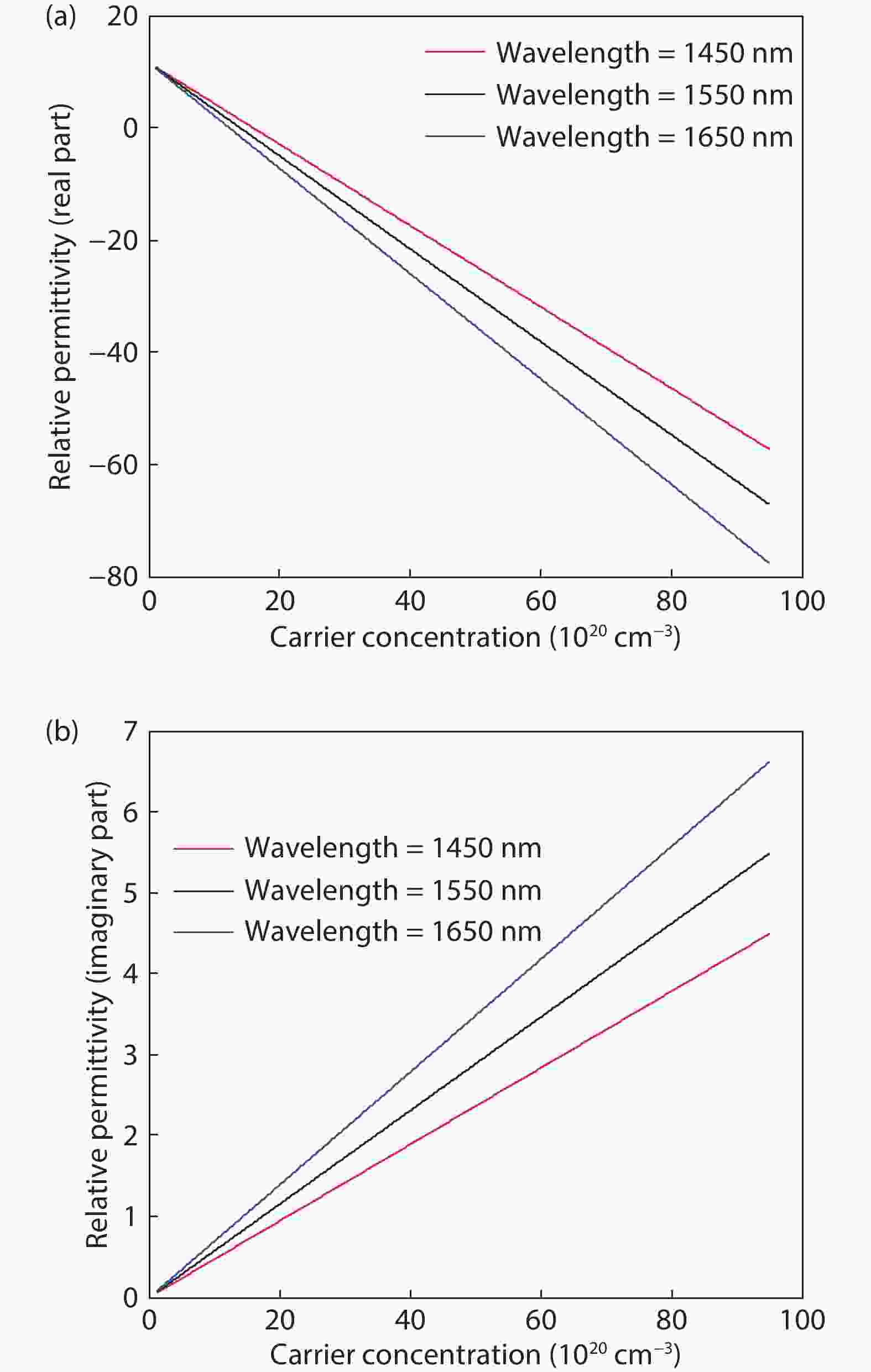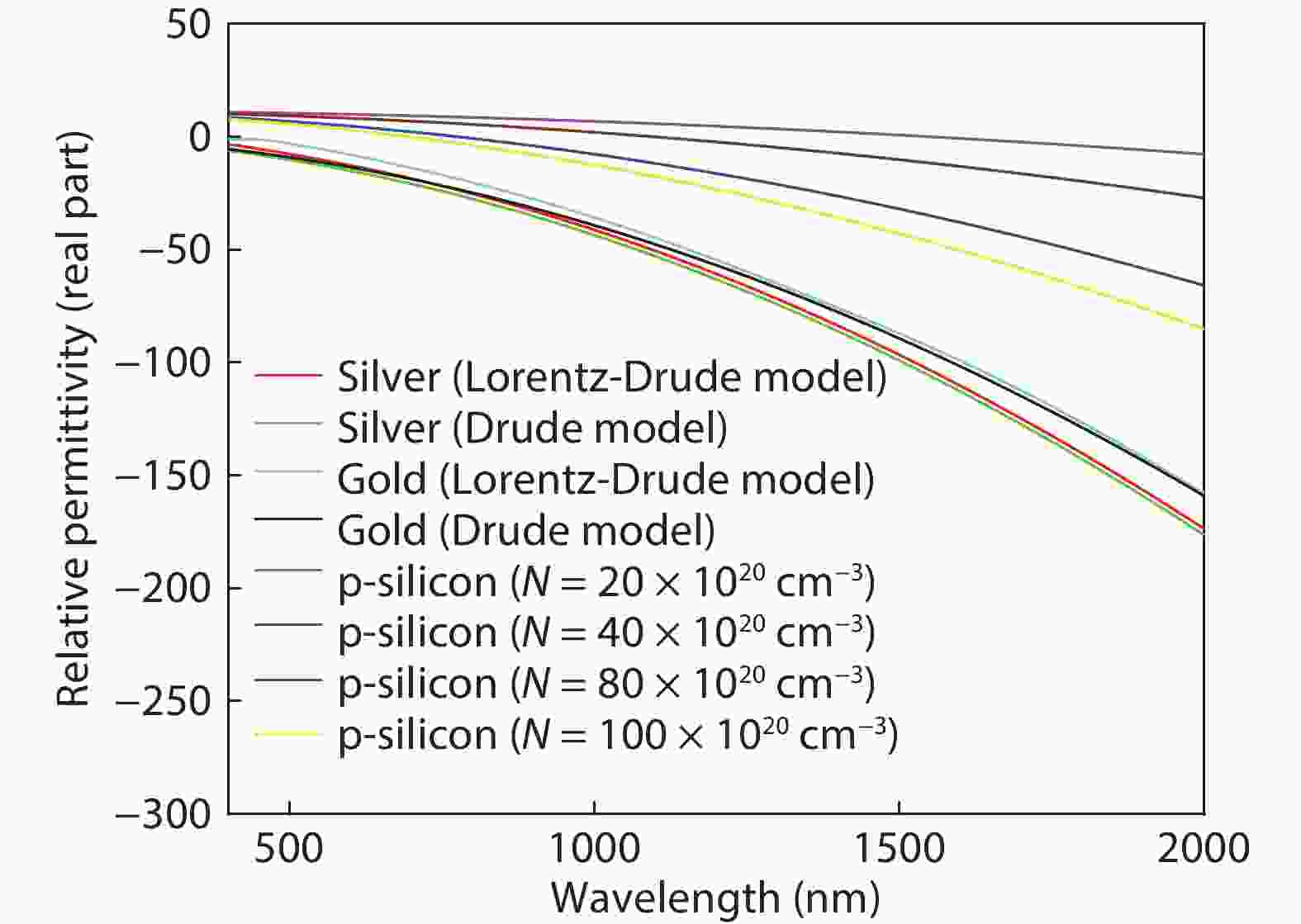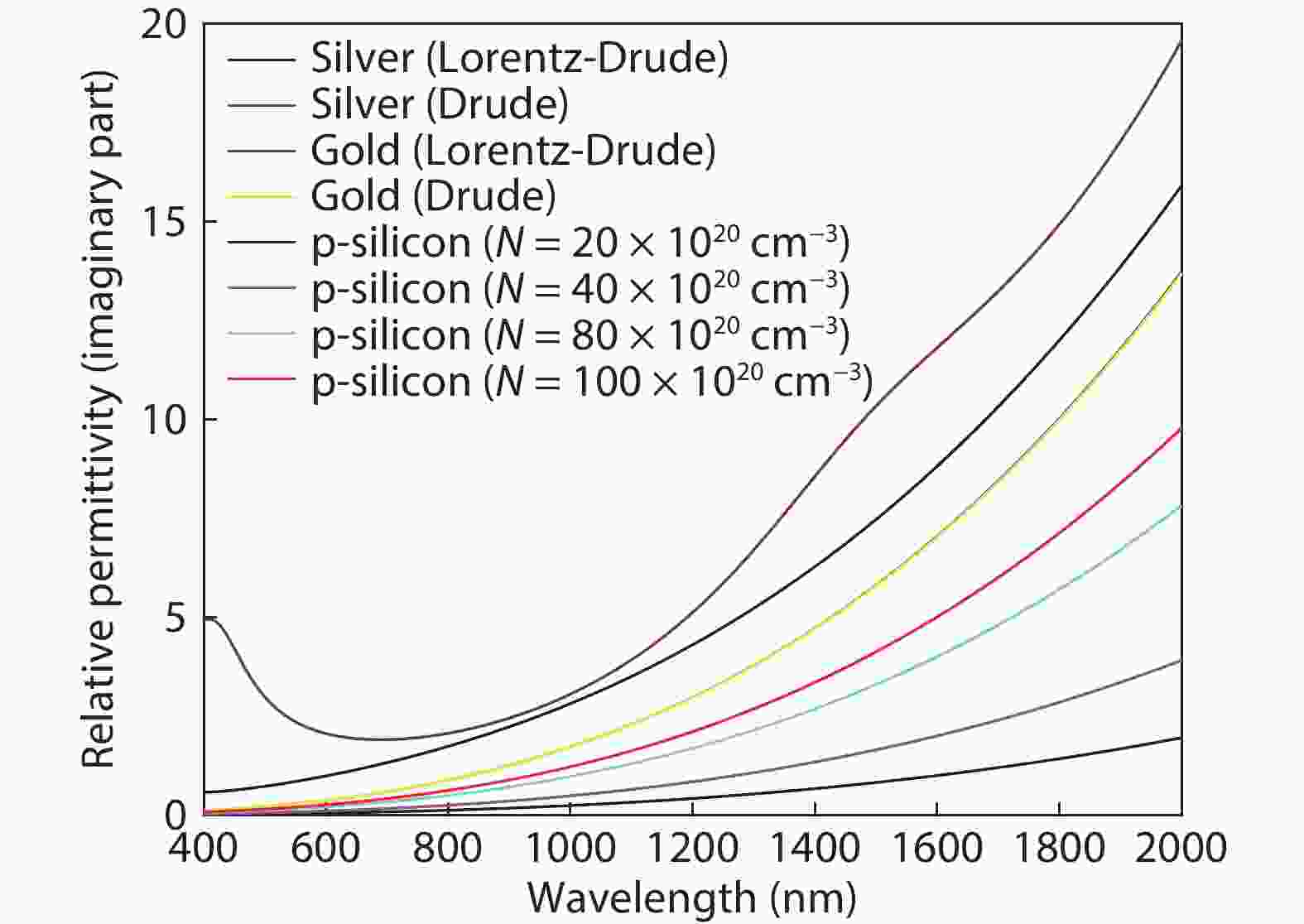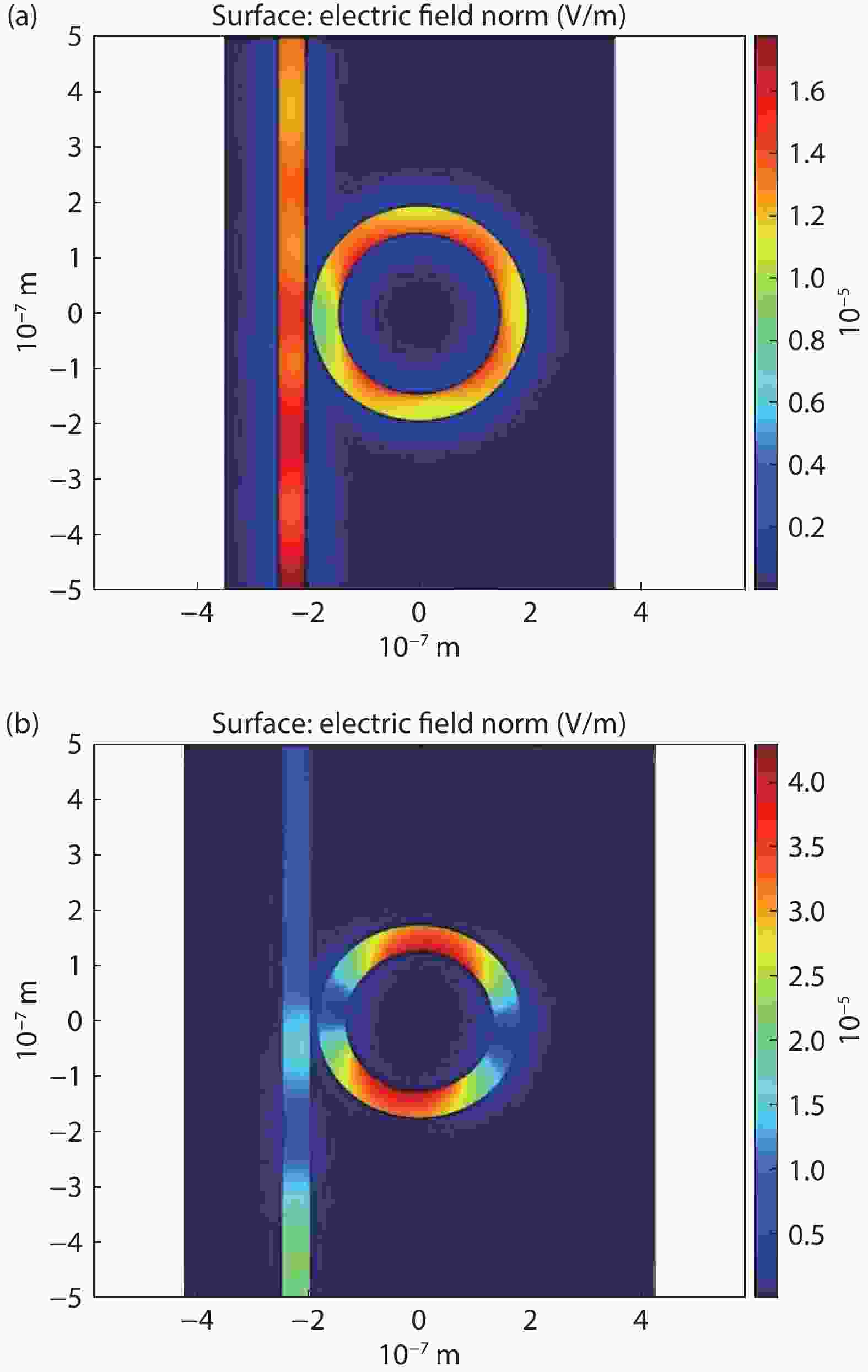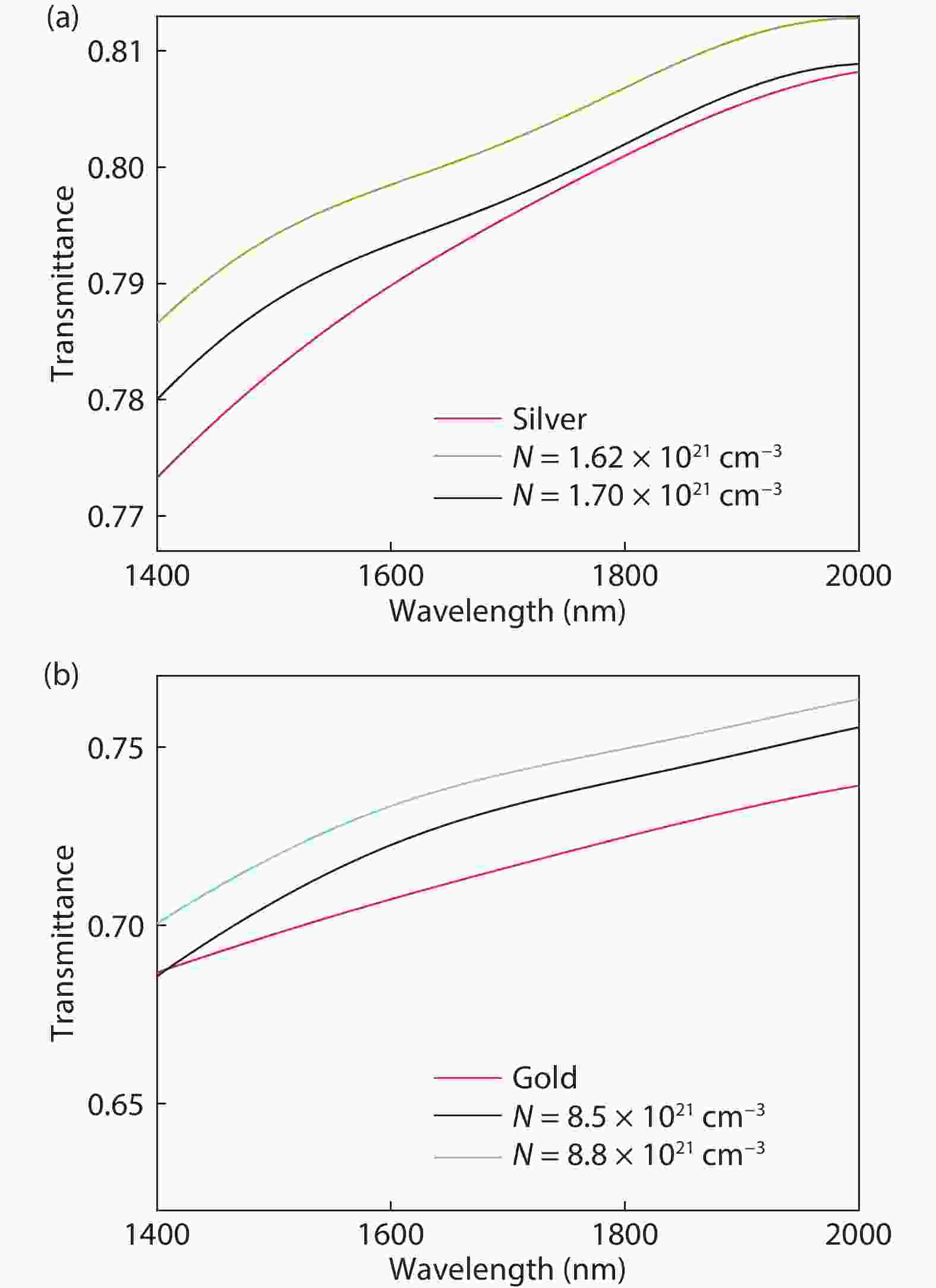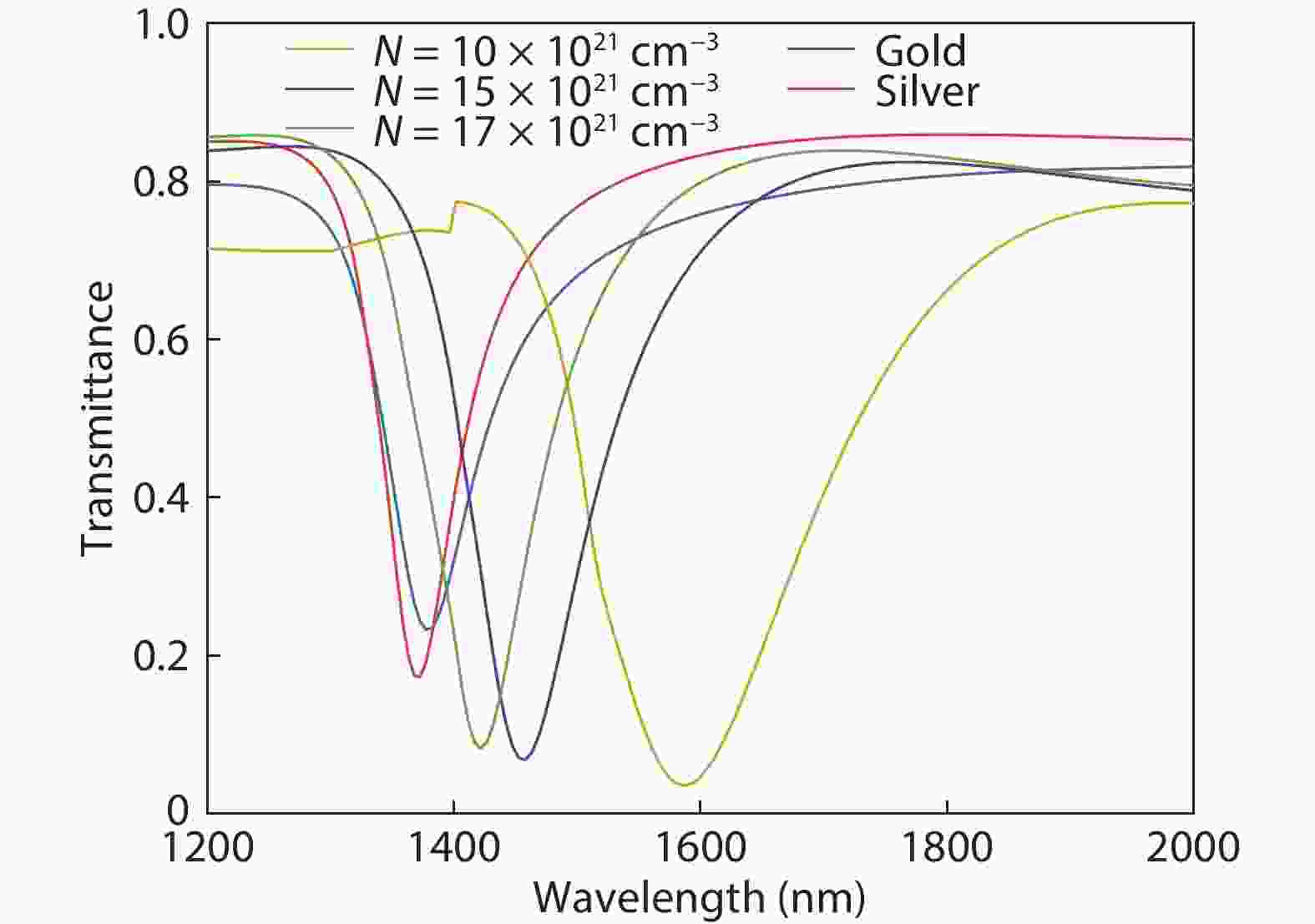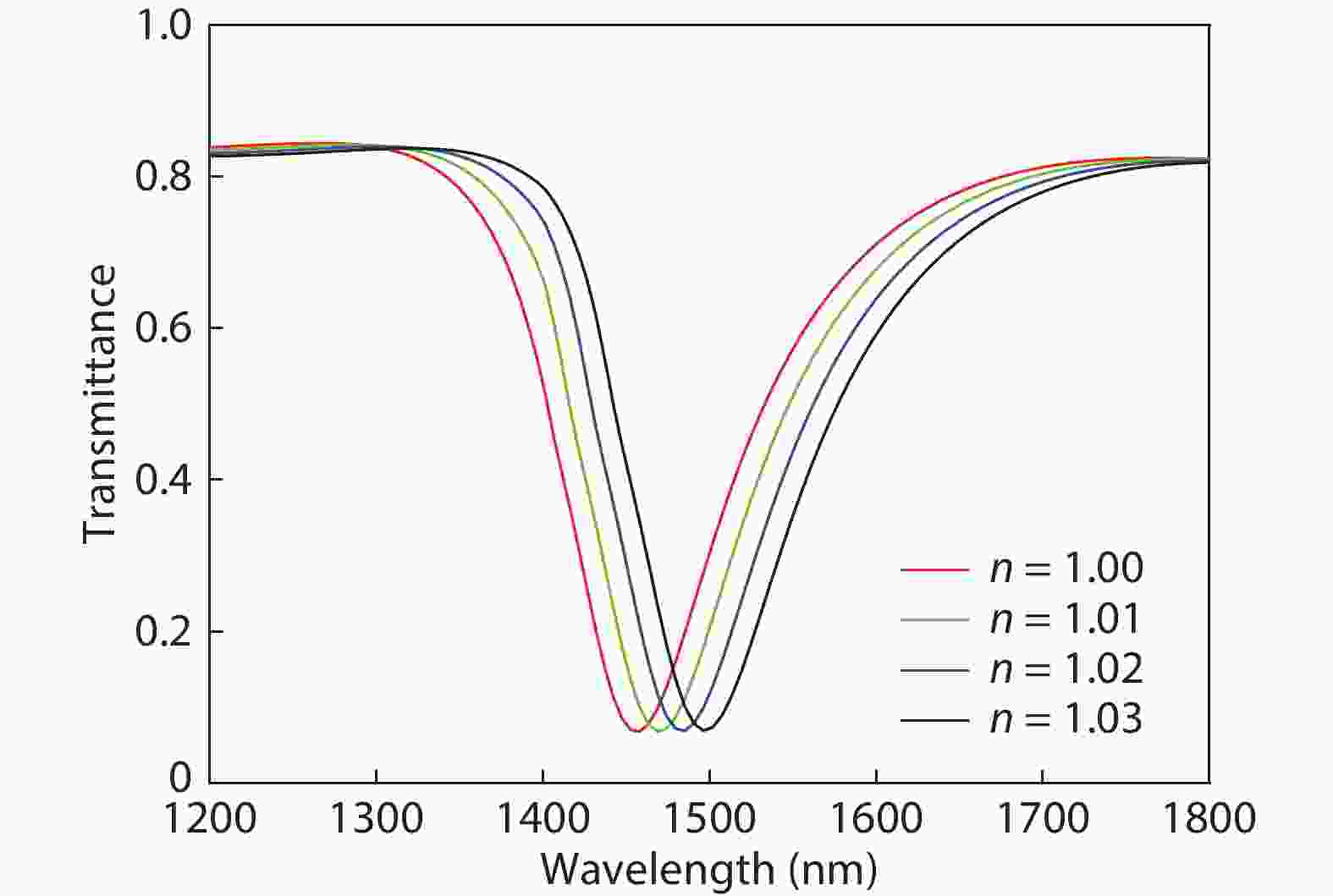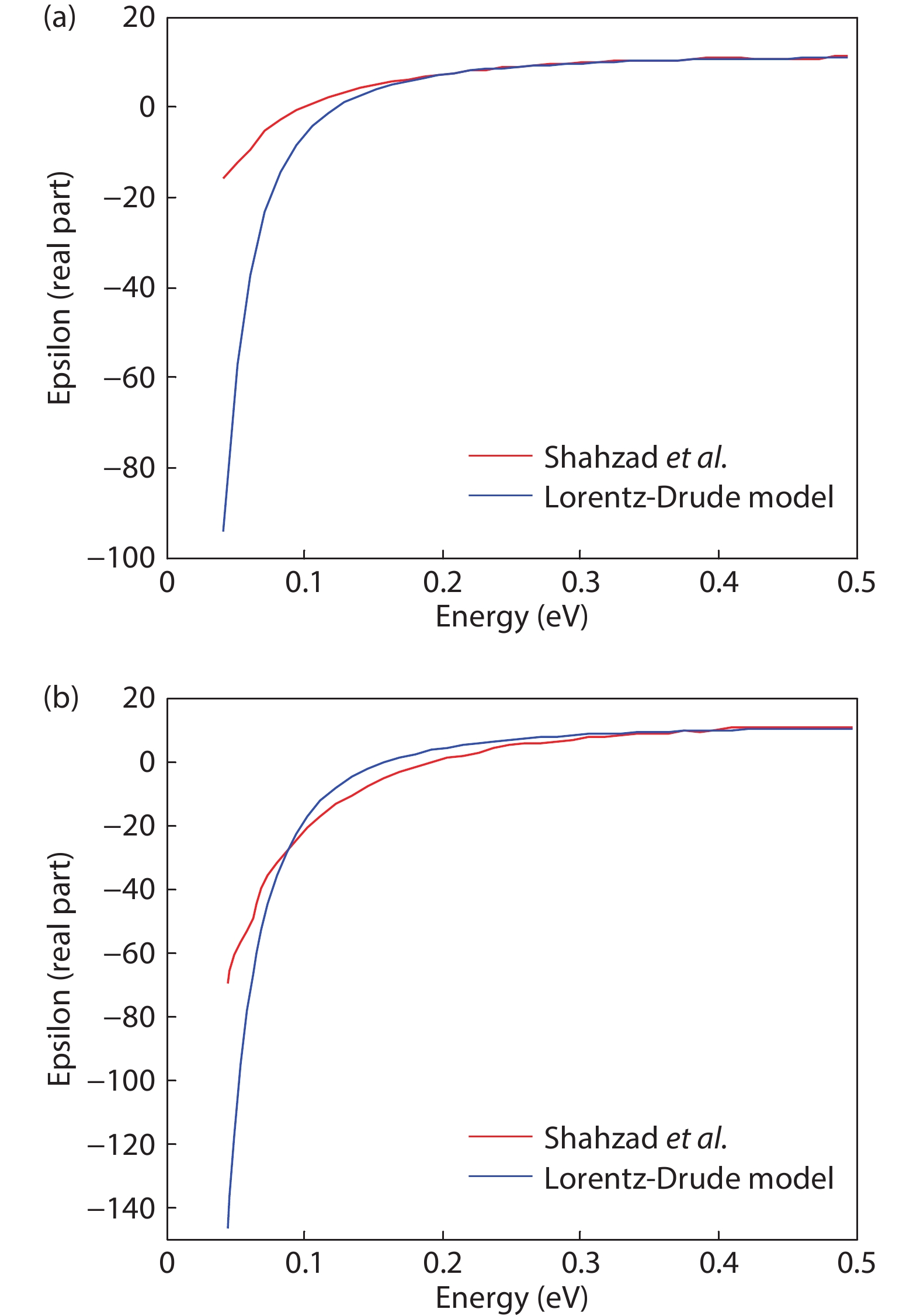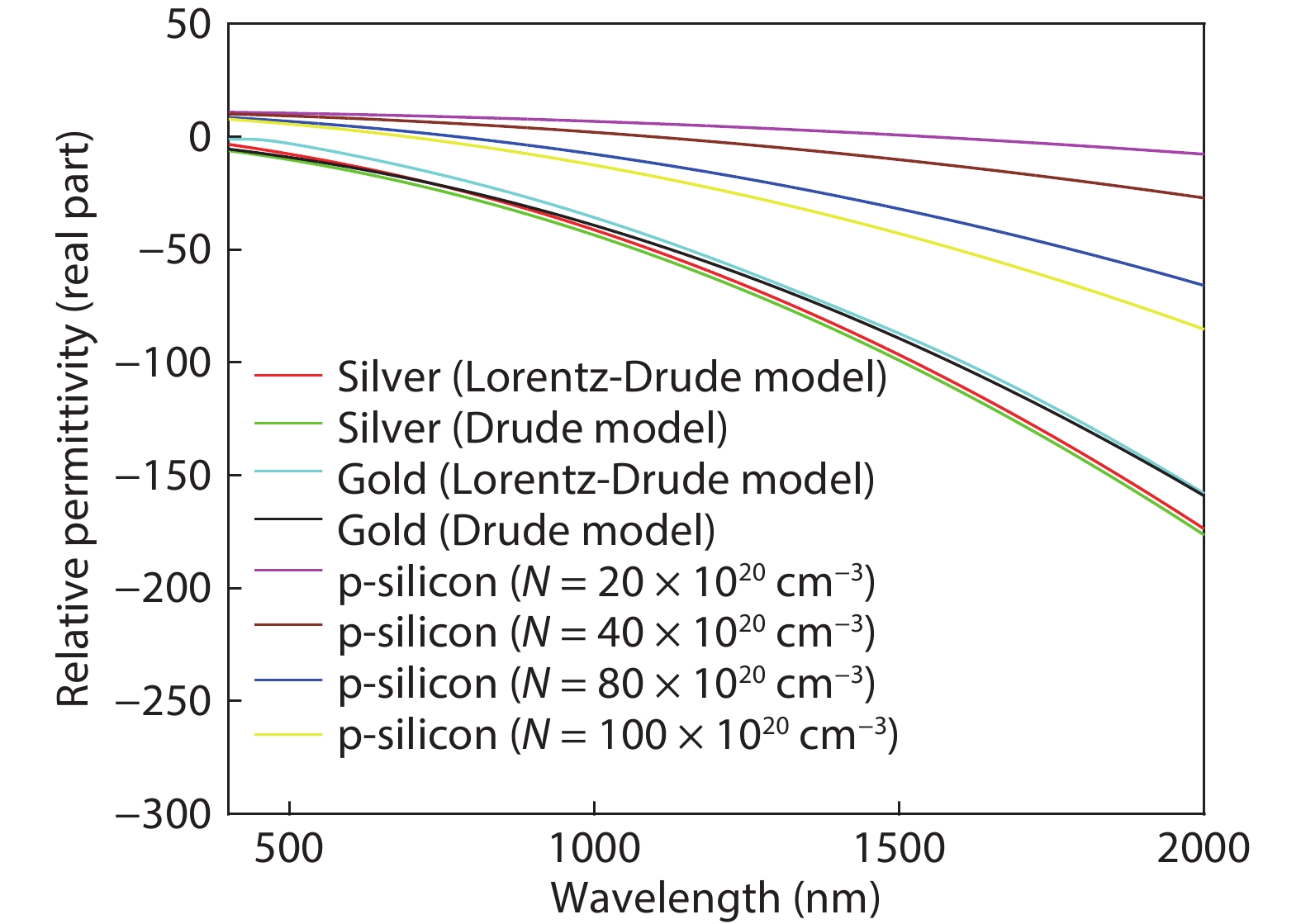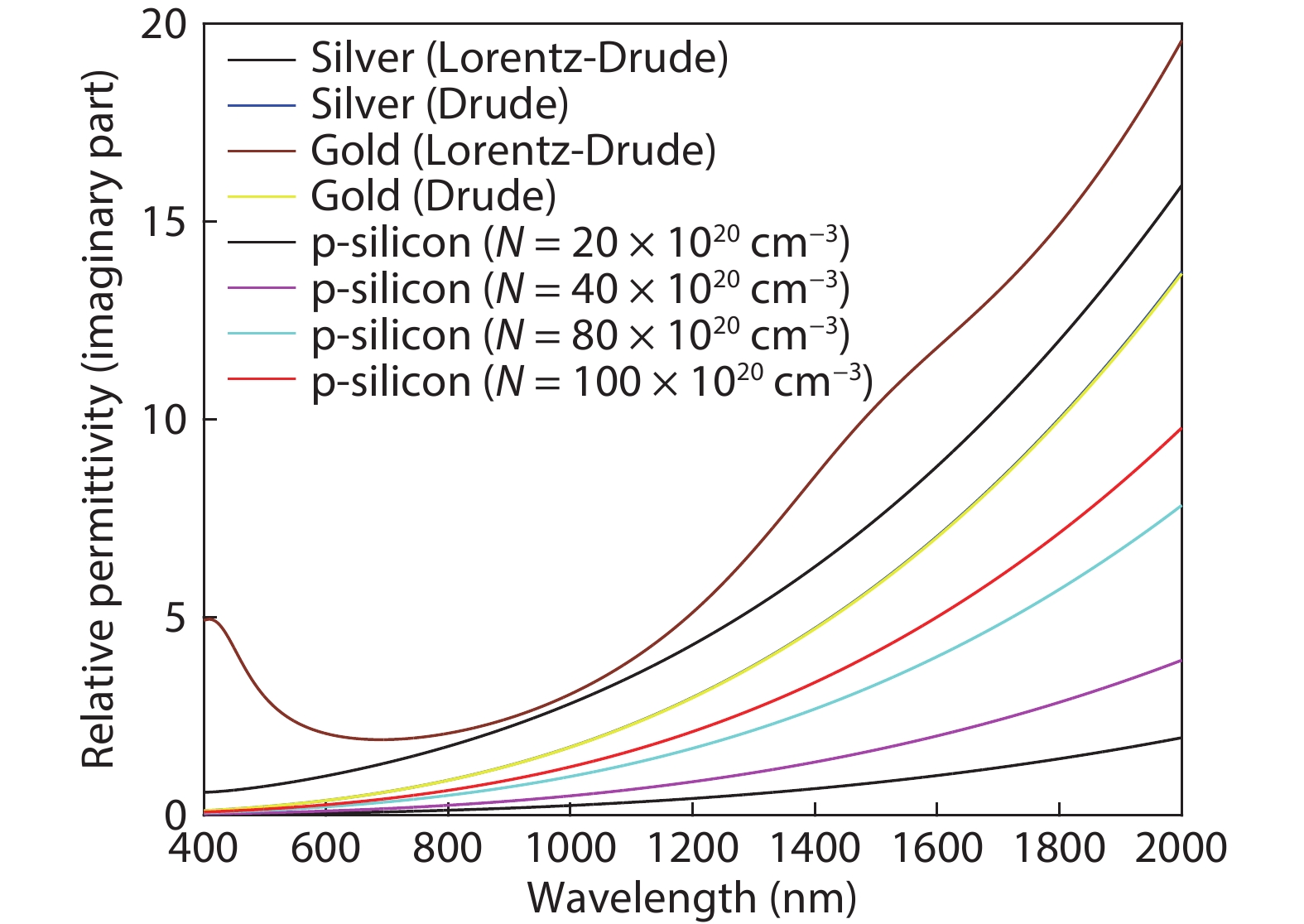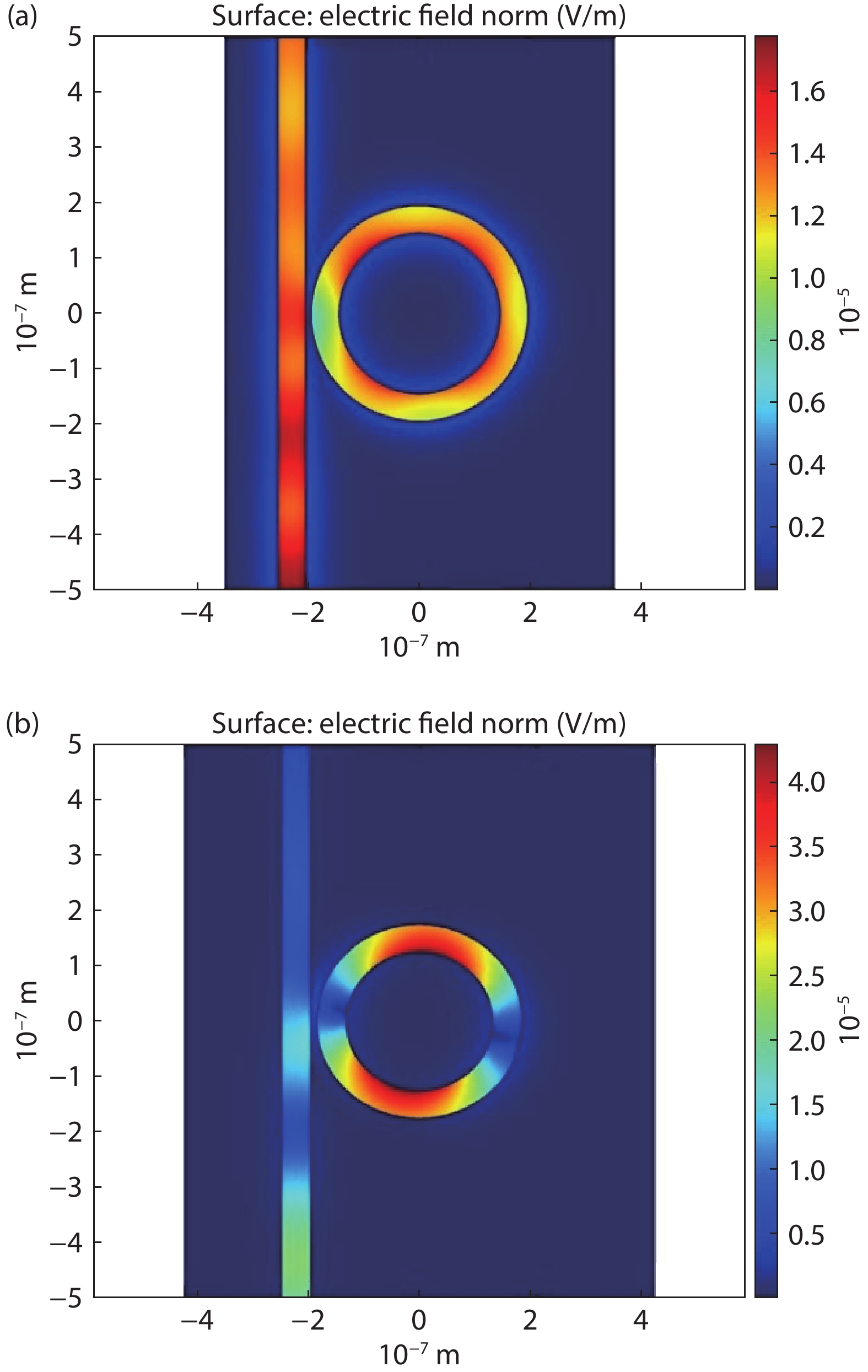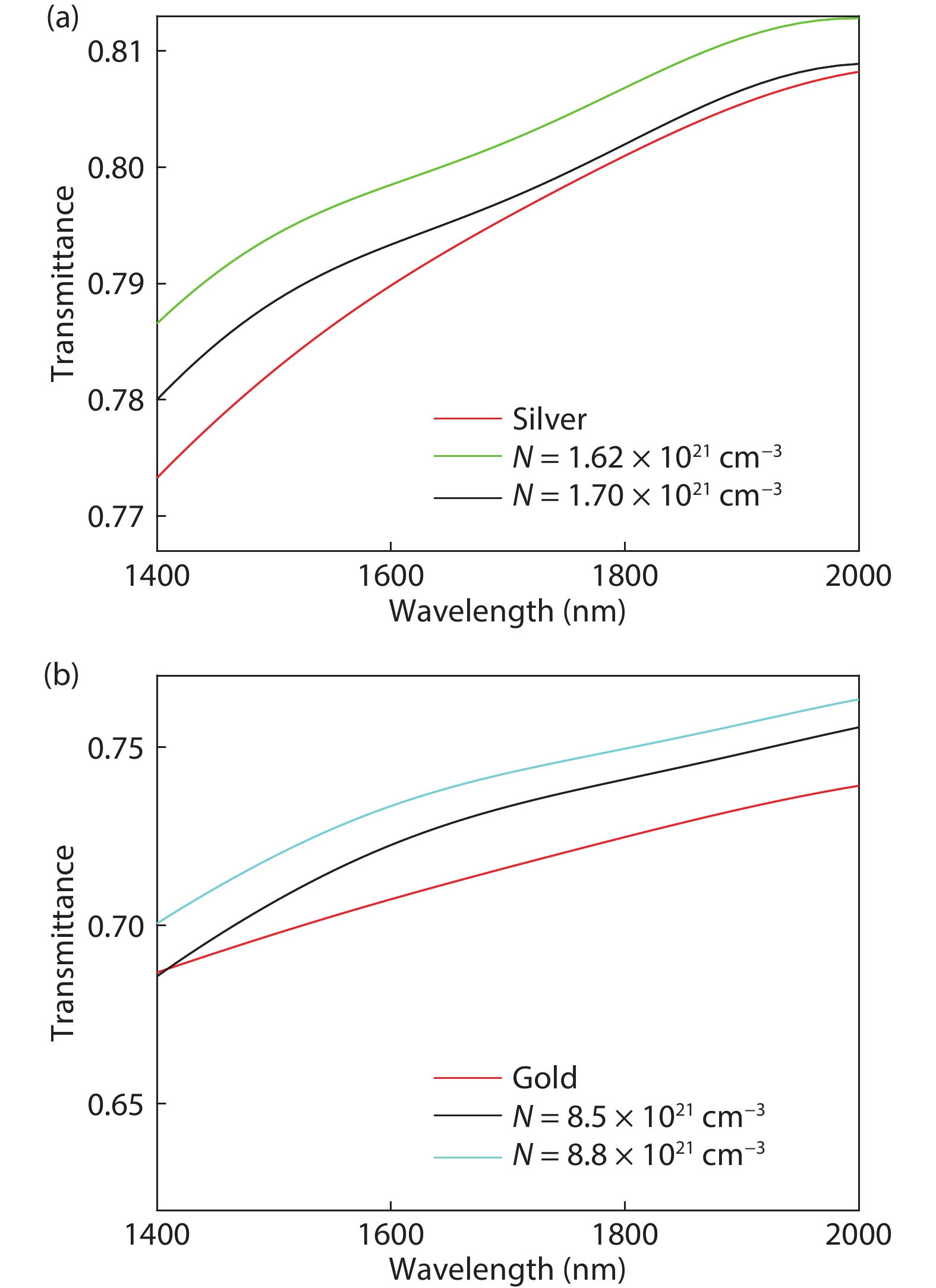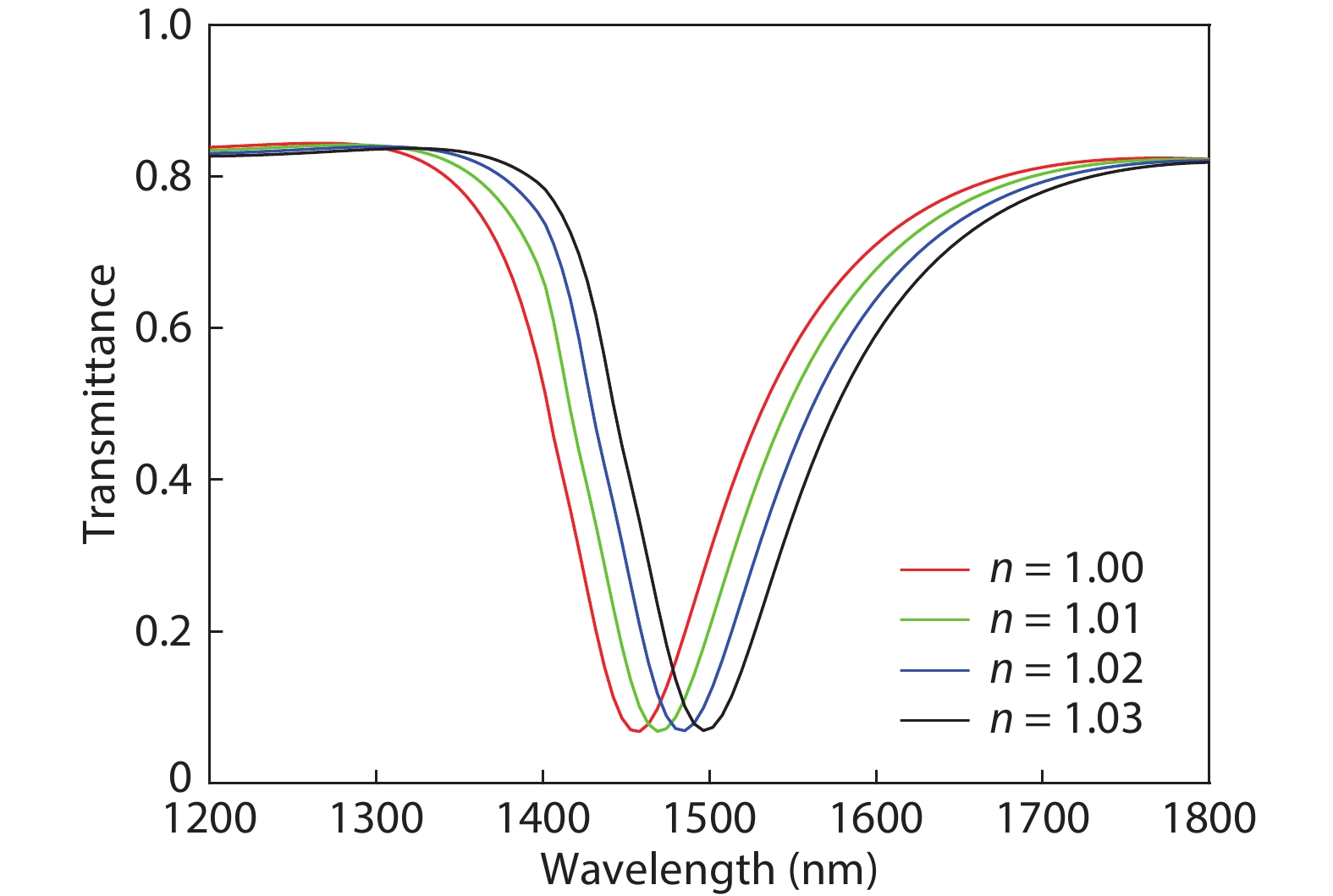| Citation: |
Md. Omar Faruque, Rabiul Al Mahmud, Rakibul Hasan Sagor. Heavily doped silicon: A potential replacement of conventional plasmonic metals[J]. Journal of Semiconductors, 2021, 42(6): 062302. doi: 10.1088/1674-4926/42/6/062302
M O Faruque, R Al Mahmud, R H Sagor, Heavily doped silicon: A potential replacement of conventional plasmonic metals[J]. J. Semicond., 2021, 42(6): 062302. doi: 10.1088/1674-4926/42/6/062302.
Export: BibTex EndNote
|
Heavily doped silicon: A potential replacement of conventional plasmonic metals
doi: 10.1088/1674-4926/42/6/062302
More Information-
Abstract
The plasmonic property of heavily doped p-type silicon is studied here. Although most of the plasmonic devices use metal–insulator–metal (MIM) waveguide in order to support the propagation of surface plasmon polaritons (SPPs), metals that possess a number of challenges in loss management, polarization response, nanofabrication etc. On the other hand, heavily doped p-type silicon shows similar plasmonic properties like metals and also enables us to overcome the challenges possessed by metals. For numerical simulation, heavily doped p-silicon is mathematically modeled and the theoretically obtained relative permittivity is compared with the experimental value. A waveguide is formed with the p-silicon-air interface instead of the metal–air interface. Formation and propagation of SPPs similar to MIM waveguides are observed. -
References
[1] Barnes W L, Dereux A, Ebbesen T W. Surface plasmon subwavelength optics. Nature, 2003, 424, 824 doi: 10.1038/nature01937[2] Lu H, Liu X, Wang G, et al. Tunable high-channel-count bandpass plasmonic filters based on an analogue of electromagnetically induced transparency. Nanotechnology, 2012, 23, 444003 doi: 10.1088/0957-4484/23/44/444003[3] Wang H Q, Yang J B, Zhang J J, et al. Tunable band-stop plasmonic waveguide filter with symmetrical multiple-teeth-shaped structure. Opt Lett, 2016, 41, 1233 doi: 10.1364/OL.41.001233[4] Johnson P B, Christy R W. Optical constants of the noble metals. Phys Rev B, 1972, 6, 4370 doi: 10.1103/PhysRevB.6.4370[5] West P R, Ishii S, Naik G V, et al. Searching for better plasmonic materials. Laser Photonics Rev, 2010, 4, 795 doi: 10.1002/lpor.200900055[6] Cai W S, Chettiar U K, Kildishev A V, et al. Optical cloaking with metamaterials. Nat Photonics, 2007, 1, 224 doi: 10.1038/nphoton.2007.28[7] Abelès F, Borensztein Y, López Rios T. Optical properties of discontinuous thin films and rough surfaces of silver. In: Advances in Solid State Physics. Berlin, Heidelberg: Springer Berlin Heidelberg, 2007, 93[8] Berestetskii V B, Lifshitz E M, Pitaevskii L P. Quantum Electrodynamics. Volume 4. Butterworth-Heinemann, 1982[9] Shahzad M, Medhi G, Peale R E, et al. Infrared surface plasmons on heavily doped silicon. J Appl Phys, 2011, 110, 123105 doi: 10.1063/1.3672738[10] Linaschke D, Schilling N, Dani I, et al. Highly n-doped surfaces on n-type silicon wafers by laser-chemical processes. Energy Procedia, 2014, 55, 247 doi: 10.1016/j.egypro.2014.08.076[11] Mizushima I, Murakoshi A, Watanabe M, et al. Hole generation without annealing in high dose boron implanted silicon: Heavy doping by B12 icosahedron as a double acceptor. Jpn J Appl Phys, 1994, 33, 404 doi: 10.1143/JJAP.33.404[12] Viña L, Cardona M. Effect of heavy doping on the optical properties and the band structure of silicon. Phys Rev B, 1984, 29, 6739 doi: 10.1103/PhysRevB.29.6739[13] Ma Z, Liu Y, Deng L, et al. Heavily boron-doped silicon layer for the fabrication of nanoscale thermoelectric devices. Nanomaterials, 2018, 8, 77 doi: 10.3390/nano8020077[14] Miyao M, Motooka T, Natsuaki N, et al. Change of the electron effective mass in extremely heavily doped n-type Si obtained by ion implantation and laser annealing. Solid State Commun, 1981, 37, 605 doi: 10.1016/0038-1098(81)90144-7[15] Jellison G E, Modine F A, White C W, et al. Optical properties of heavily doped silicon between 1.5 and 4.1 eV. Phys Rev Lett, 1981, 46, 1414 doi: 10.1103/PhysRevLett.46.1414[16] Nobili, Solmi, Parisini, et al. Precipitation, aggregation, and diffusion in heavily arsenic-doped silicon. Phys Rev B, 1994, 49, 2477 doi: 10.1103/PhysRevB.49.2477[17] Maier S A. Spectroscopy and sensing. In: Plasmonics: Fundamentals and Applications. New York, NY: Springer US, 2007, 177[18] Saber M G, Abadía N, Plant D V. CMOS compatible all-silicon TM pass polarizer based on highly doped silicon waveguide. Opt Express, 2018, 26, 20878 doi: 10.1364/OE.26.020878[19] Qi Z P, Hu G H, Li L, et al. Design and analysis of a compact SOI-based aluminum/highly doped p-type silicon hybrid plasmonic modulator. IEEE Photonics J, 2016, 8, 1 doi: 10.1109/JPHOT.2016.2559439[20] Naik G V, Shalaev V M, Boltasseva A. Alternative plasmonic materials: Beyond gold and silver. Adv Mater, 2013, 25, 3264 doi: 10.1002/adma.201205076[21] Chen Y B, Zhang Z M. Heavily doped silicon complex gratings as wavelength-selective absorbing surfaces. J Phys D, 2008, 41, 095406 doi: 10.1088/0022-3727/41/9/095406[22] Schroder D K, Thomas R N, Swartz J C. Free carrier absorption in silicon. IEEE J Solid-State Circuits, 1978, 13, 180 doi: 10.1109/JSSC.1978.1051012[23] van Exter M, Grischkowsky D. Carrier dynamics of electrons and holes in moderately doped silicon. Phys Rev B, 1990, 41, 12140 doi: 10.1103/PhysRevB.41.12140[24] Rakić A D, Djurišić A B, Elazar J M, et al. Optical properties of metallic films for vertical-cavity optoelectronic devices. Appl Opt, 1998, 37, 5271 doi: 10.1364/AO.37.005271[25] Kildishev A V, Shalaev V M. Engineering space for light via transformation optics. Opt Lett, 2008, 33, 43 doi: 10.1364/OL.33.000043[26] Cai W S, Chettiar U K, Kildishev A V, et al. Designs for optical cloaking with high-order transformations. Opt Express, 2008, 16, 5444 doi: 10.1364/OE.16.005444 -
Proportional views





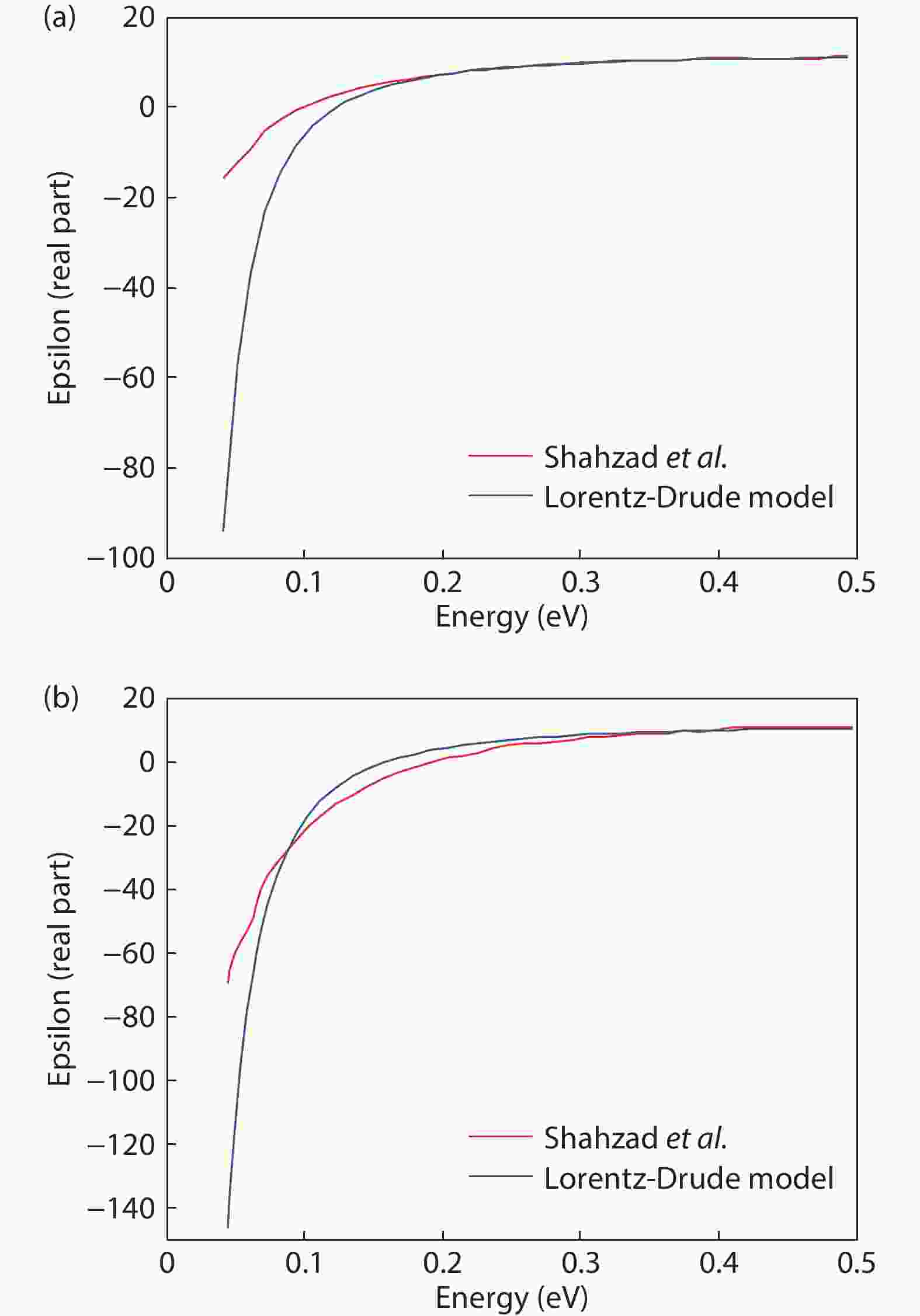
 DownLoad:
DownLoad:
